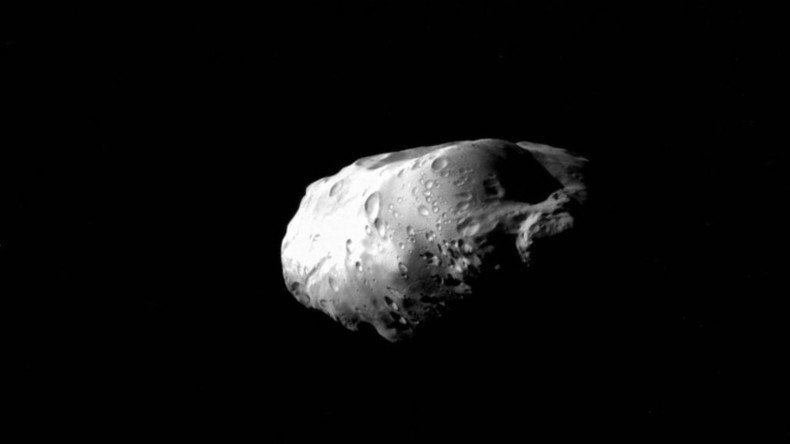NASA paps: Prometheus as never seen before

NASA’s Cassini spacecraft has delivered an especially high resolution image of one of Saturn’s moons, Prometheus, and it’s looking good.
Cassini got as close as 37,000 kilometers to the pockmarked moon – although that sounds exceptionally far, it’s considered to be a close fly-by.
The image shows the anti-Saturn side of Prometheus, north facing upwards.
A new look at Saturn's moon Prometheus, one of the highest resolution views ever. Details: https://t.co/WIw2dRAAJfpic.twitter.com/M1jtcWEBw3
— CassiniSaturn (@CassiniSaturn) December 8, 2015It was taken in visible light and provides a dramatic view of the moon’s surface, as half of the satellite is drowned in darkness.
Unlike our moon, Prometheus is elongated, as seen in the photo. It was discovered in 1980 and got its name in 1985 to continue the tradition of Saturn’s moons being named after Titans from Greek Mythology. Being rather greedy like that, Saturn has at least 150 moons and moonlets.
The Cassini mission is a cooperative project of NASA, the ESA (European Space Agency) and the Italian Space Agency. The Jet Propulsion Laboratory (JPL), a division of the California Institute of Technology in Pasadena, manages the mission for NASA's Science Mission Directorate, Washington.
Saturn moon has subsurface ocean that covers entire body – NASA http://t.co/ZquJUJPrSFpic.twitter.com/0T99354n9J
— RT (@RT_com) September 16, 2015












